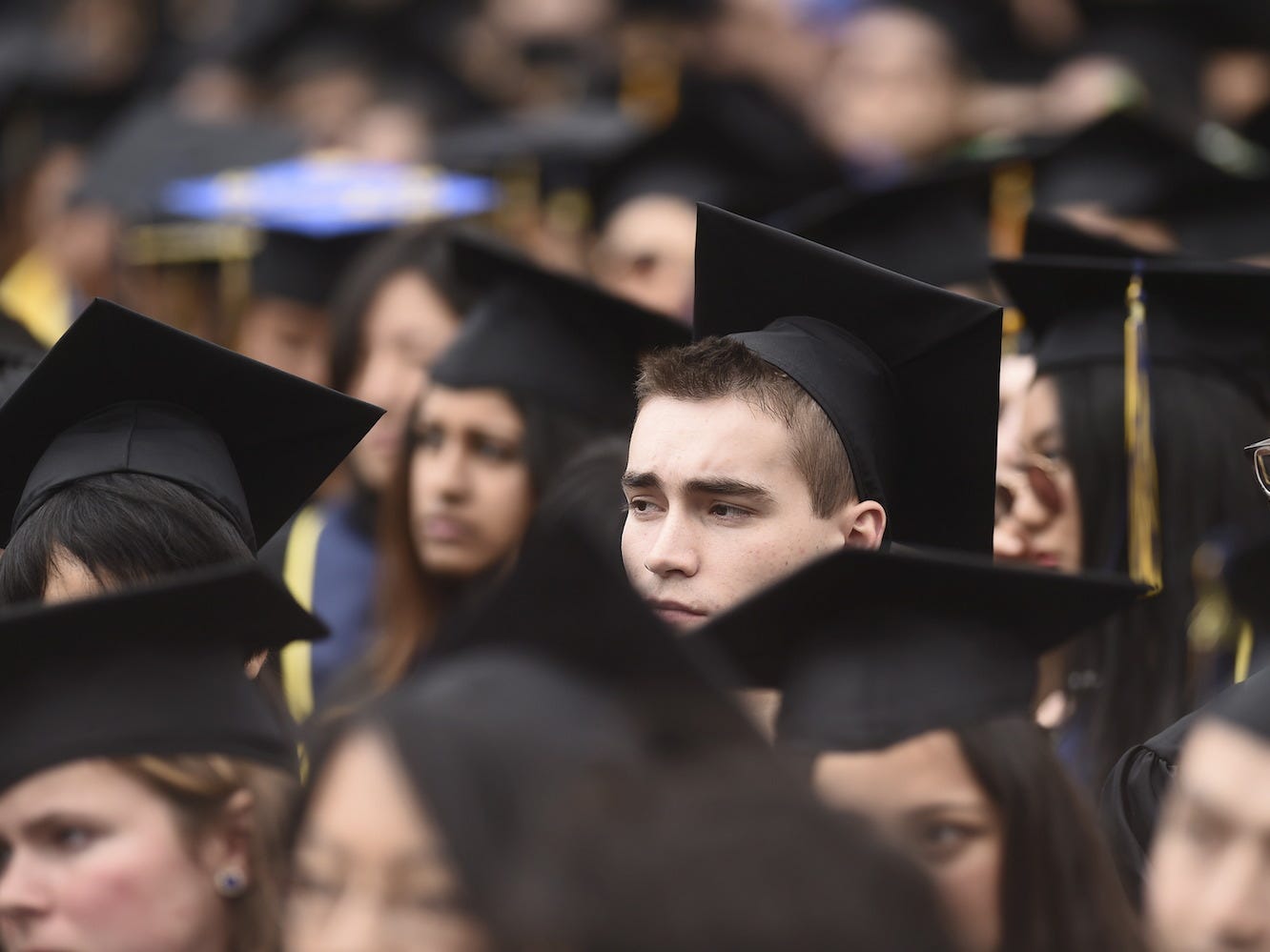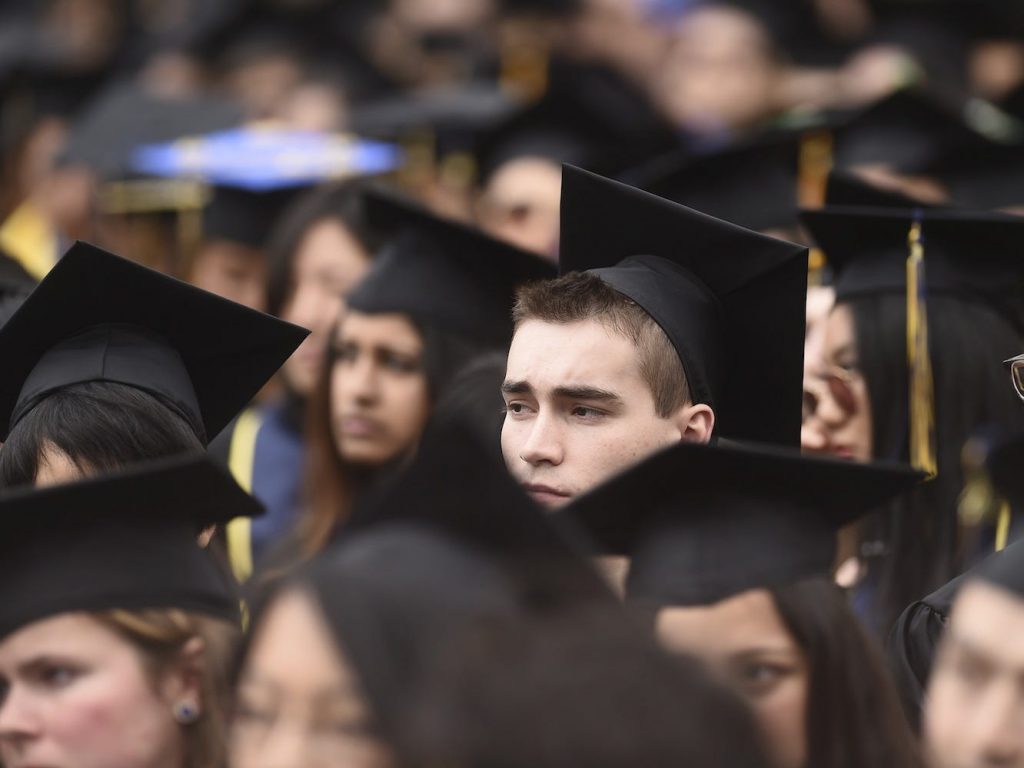
REUTERS/Noah Berger
- Navient just became the third student-loan company to announce plans to end it services.
- This means 16 million borrowers will be paying their student debt to new companies next year.
- But despite the administrative burdens of doing so, the February 1 payment restart date remains.
- See more stories on Insider's business page.
When President Joe Biden announced in August that he was extending the student-loan payment freeze for the "final" time, he didn't know that yet another student-loan company would end up shutting down its services, placing a total of 16 million borrowers in the hands of new companies.
But despite the added administrative burden of transitioning millions of borrowers, and on top of resuming payments for 43 million Americans bearing the $1.7 trillion student-loan burden, the February 1 payment restart date remains.
"We will continue to work to ensure that all of our borrowers can experience a successful return to repayment," an Education Department spokesperson told Insider. "The Department expects student loan payments to resume after Jan. 31, 2022," the spokesperson added, when asked if the companies shutting down would change the timeline.
The Pennsylvania Higher Education Assistance Agency (PHEAA) and Granite State Management and Resources announced in July they will be ending their servicing contracts this year, impacting a combined 10 million borrowers. And on Tuesday, Navient – which services 6 million federal student-loan borrowers – announced its plans to do the same thing, pending approval from the Education Department.
Massachusetts Sen. Elizabeth Warren, who has been holding student-loan companies accountable for years, said borrowers can "breathe a sigh of relief" after PHEAA shut down its services, and following Navient's announcement, she said borrowers will be "far better off."
Richard Cordray, the head of the Federal Student Aid (FSA) office, suggested at a conference in September that companies are shutting down so they will not have to comply with higher accountability standards under Biden, though he didn't mention specific companies by name.
The final payment pause extension brings 'a serious sense of urgency' for reform
While the department spokesperson told Insider it has completed "multiple successful servicer transitions" over the past few years, both lawmakers and borrowers are concerned with how the transition to new servicers, and back into repayment, will impact borrowers given the minimal information the department has put forth so far.
On Tuesday, ranking members of the House and Senate education committees, Rep. Virginia Foxx and Sen. Richard Burr, sent a letter to Education Secretary Miguel Cardona saying they were "deeply concerned" about the payment restart.
"The lack of clarity and guidance about the process surrounding returning borrowers to repayment is as troubling as the process is uncertain," the Republican lawmakers wrote. Cordray also noted early last month "psychological hurdle" borrowers will encounter with restarting payments after having them on pause for so long - and holding out hope that Biden may forgive their debts.
Student-loan payments have been on pause for a year and a half, and it's given borrowers significant relief - especially for those hurt financially by the pandemic. But it doesn't mean they're ready to resume those payments in four months.
Gwen Carney, a 61-year-old single grandmother with $75,000 in student debt from her own education, previously told Insider that she's "really not looking forward to February at all."
"Restarting payments makes me very anxious because I somehow have to find that extra $200," Carney said. "I just don't have it."
And the high interest rates on student-loans aren't helping, making it difficult for borrowers to tap away at the amounts they originally borrowed.
"I've paid back almost all of my loans, but I still owe the full amount," 32-year-old Alexandria Mavin, who started with $117,000 in student debt, paid back $70,000 of it, and still owes $98,000, told Insider. "It's a never-ending cycle."
Seth Frotman, executive director of the Student Borrower Protection Center, previously told Insider that the department's firm February 1 deadline means the system must be improved before borrowers are pushed back into repayment, signaling "a serious sense of urgency that the department needs to deliver on its promises."
The reform process is under way
President Joe Biden campaigned on canceling $10,000 in student debt per borrower, along with reforming student-loan forgiveness programs like the Public Service Loan Forgiveness (PSLF) program, which rejects 98% of applicants. His promise of broad student loan cancellation has yet to be fulfilled, but reform could be on the way.
The president is slowly adding to his ranks student borrower advocates who have cracked down on student-loan abuses in the past. On Thursday, Rohit Chopra was confirmed to lead the Consumer Financial Protection Bureau (CFPB). He was previously the agency's first student-loan ombudsman, during which he ensured borrowers were protected, and in some cases, took legal action against student-loan companies misleading borrowers.
Massachusetts Sen. Elizabeth Warren, who created the CFPB, told Insider that canceling student debt will ensure borrowers do not have to deal with predatory student-loan behavior, referring to Navient's actions that pushed borrowers into forbearance.
"Ultimately, the student loan system is broken," Warren said. "The only way to guarantee that borrowers do not face the same predatory behavior from Navient's replacement is to cancel student debt, so that no borrower's future is held hostage by corporations profiting off their financial distress."
